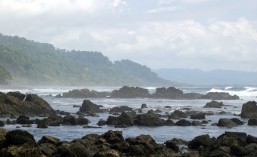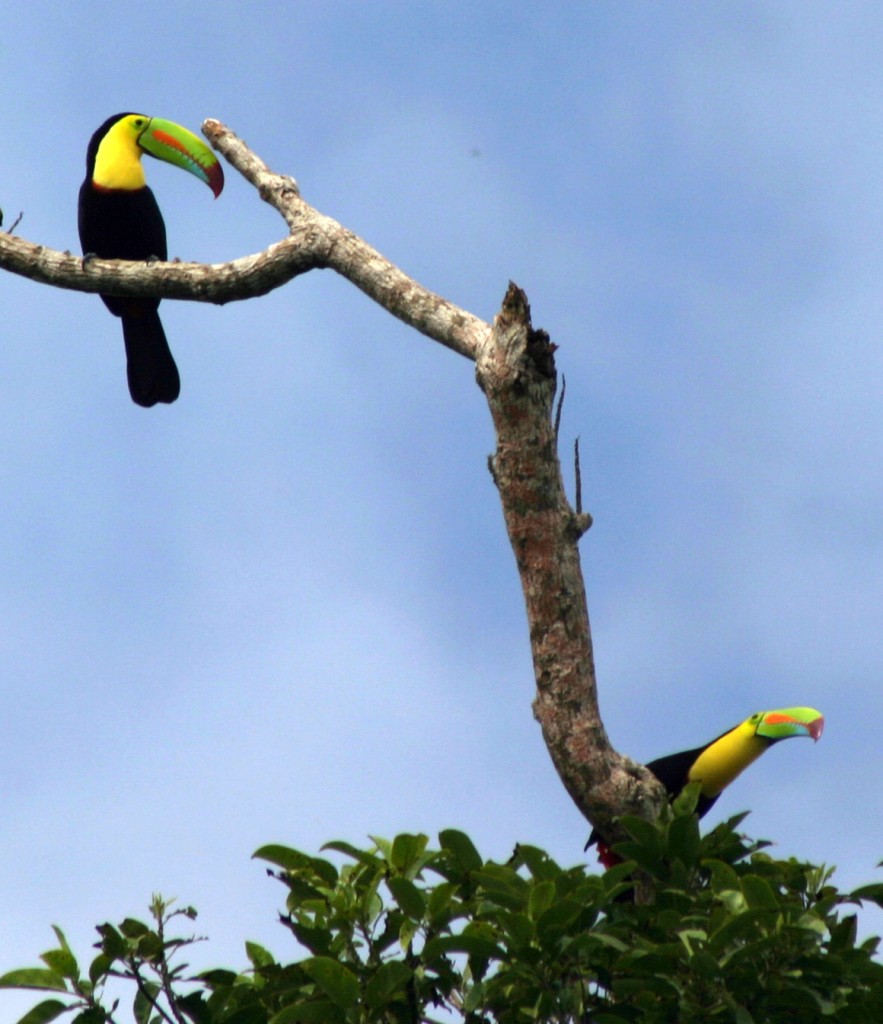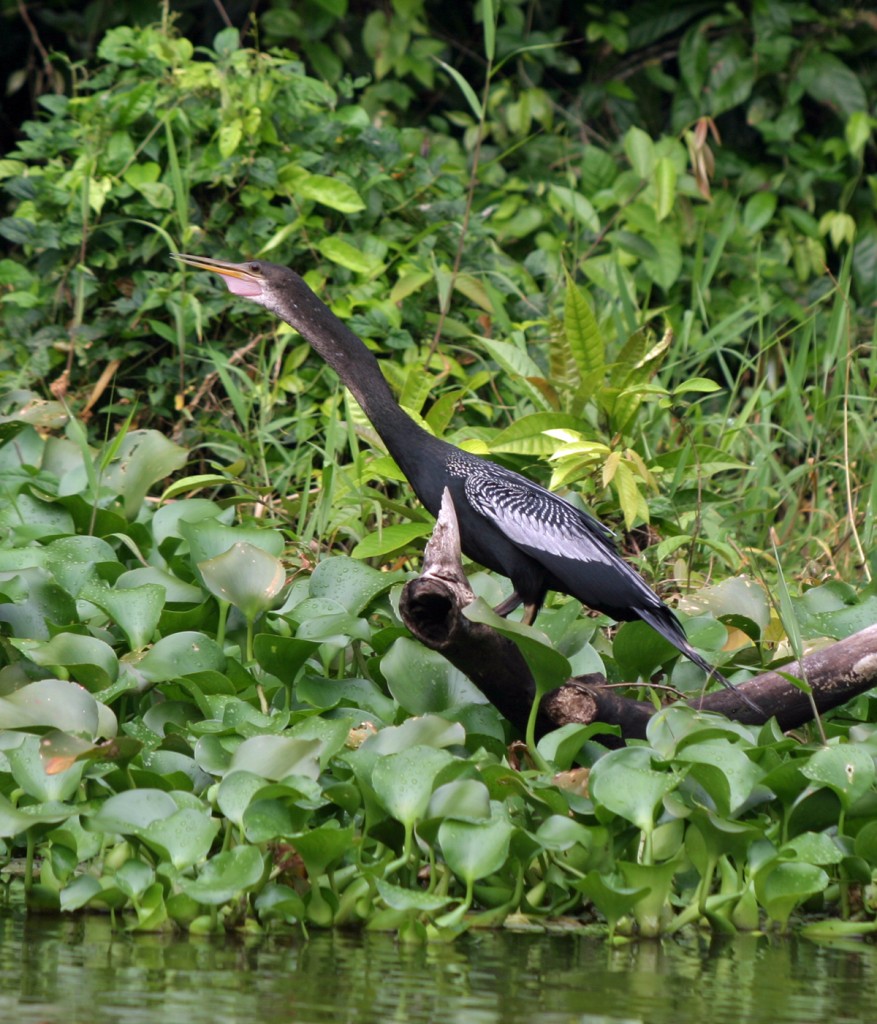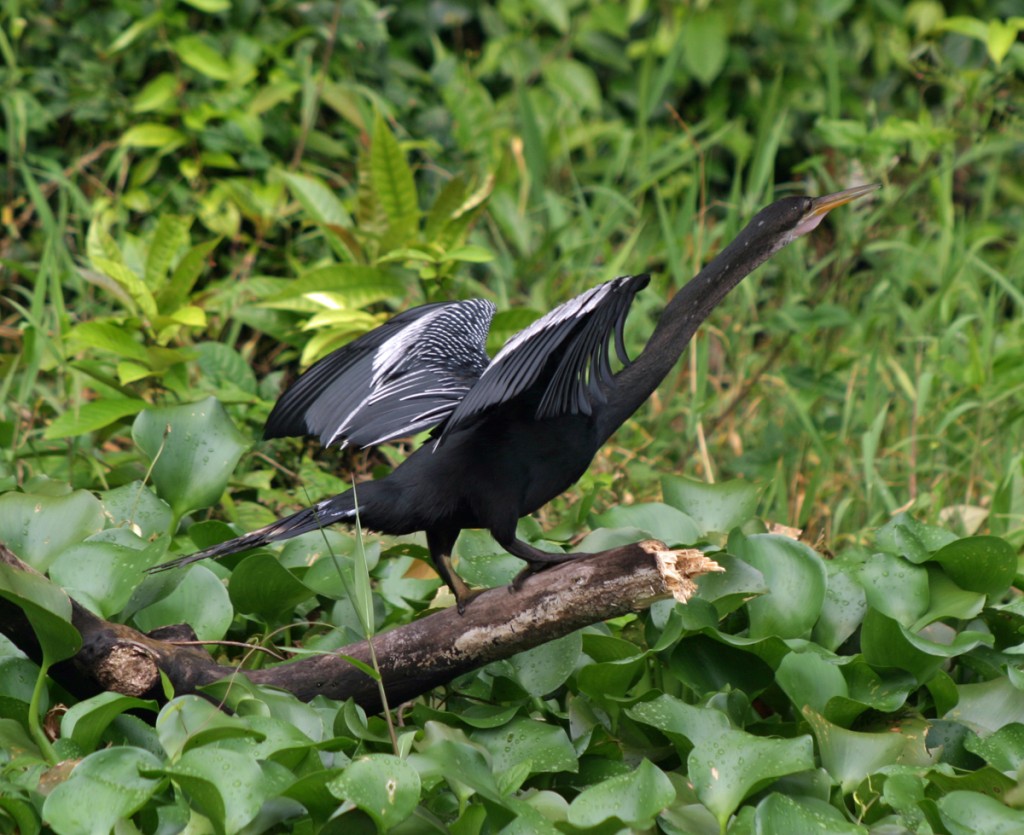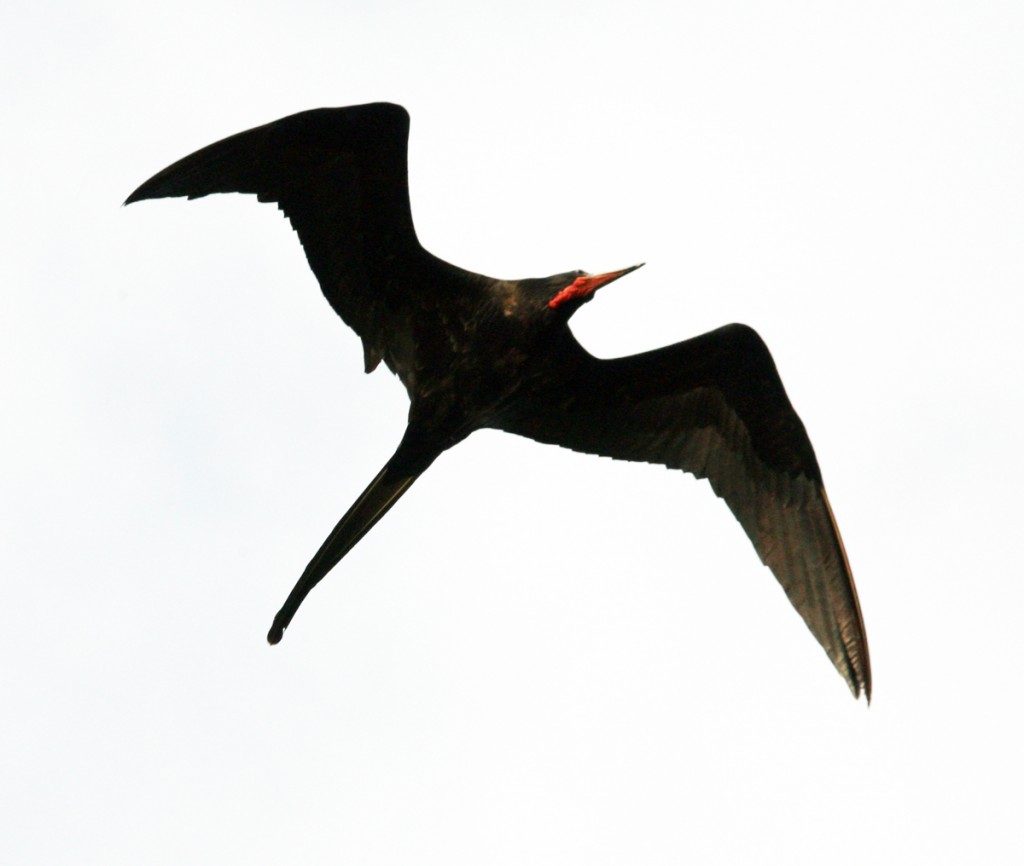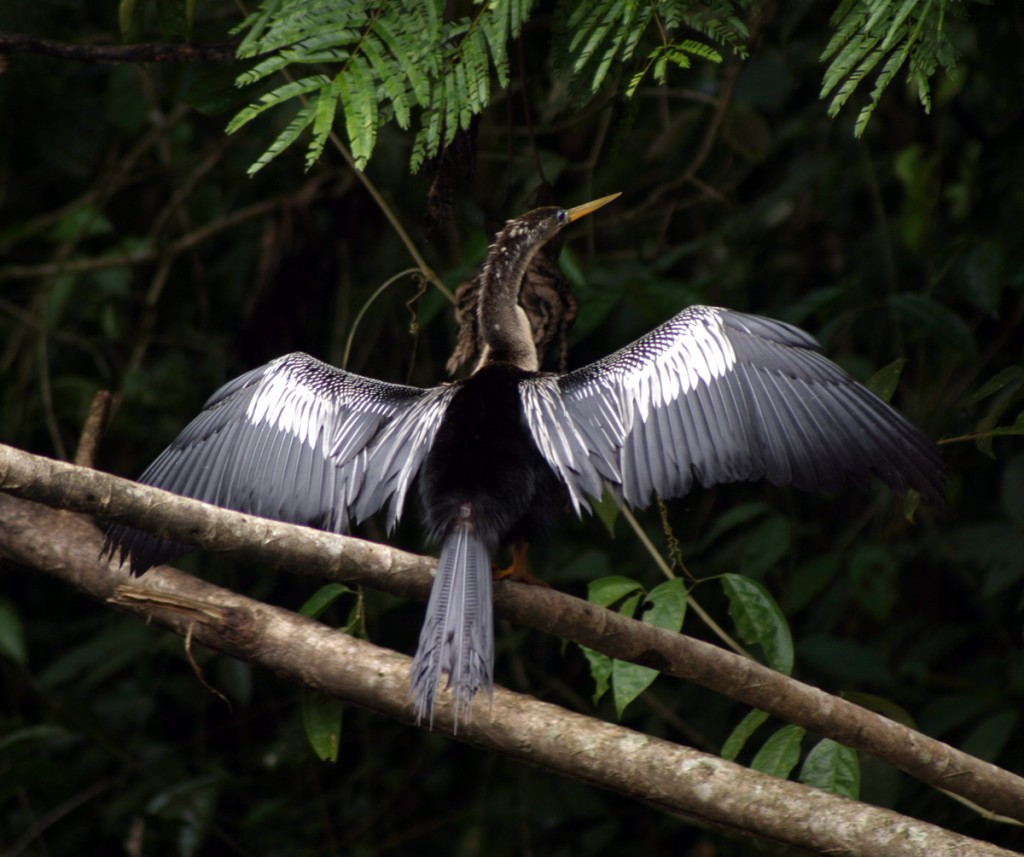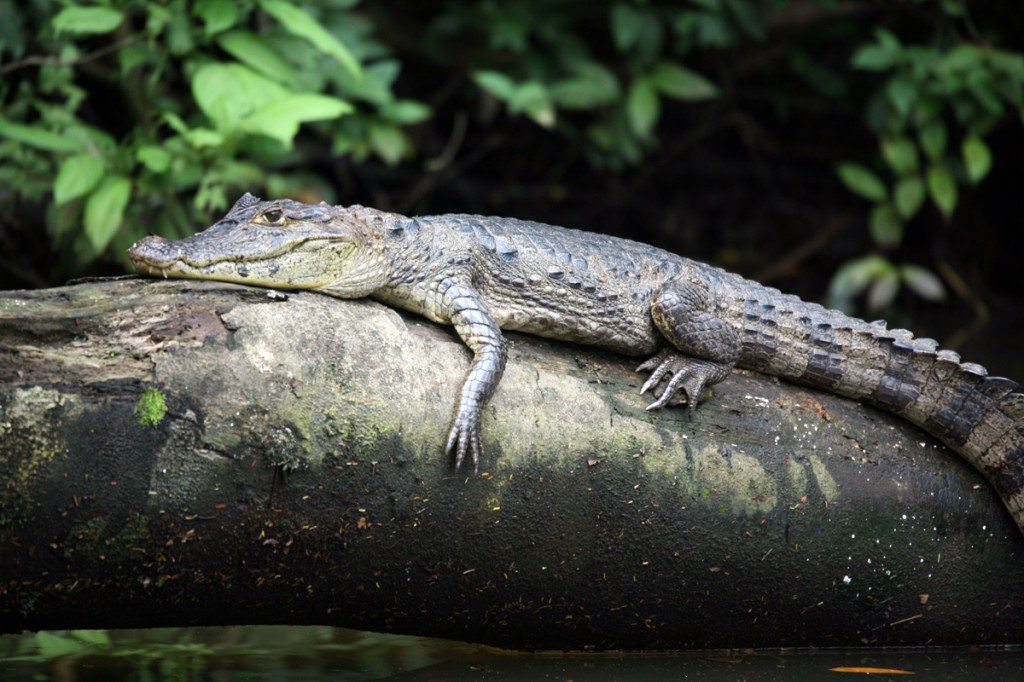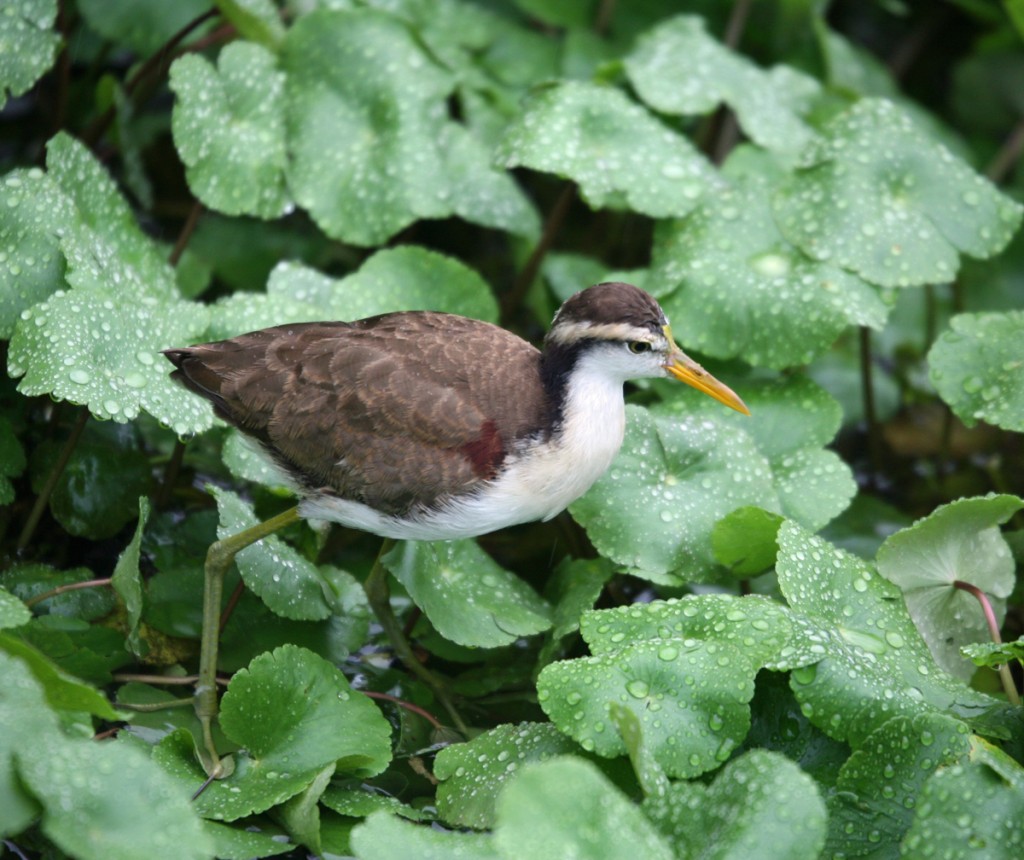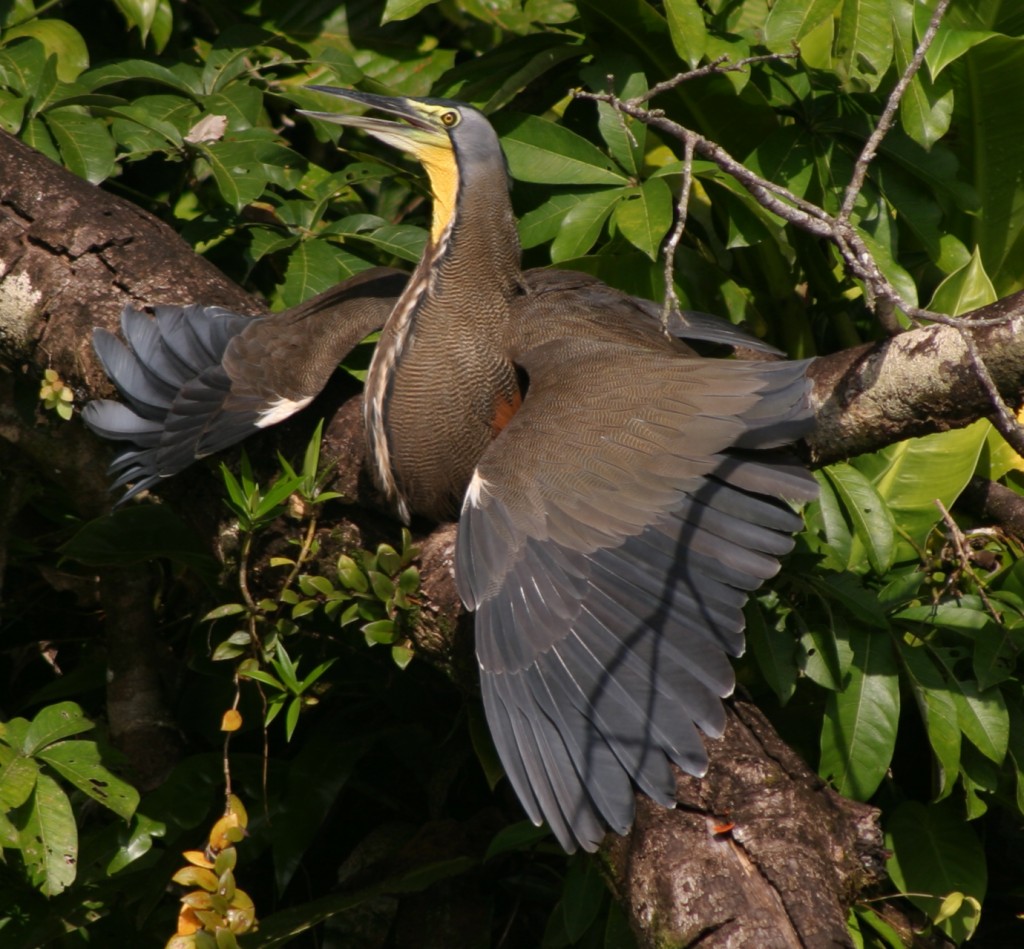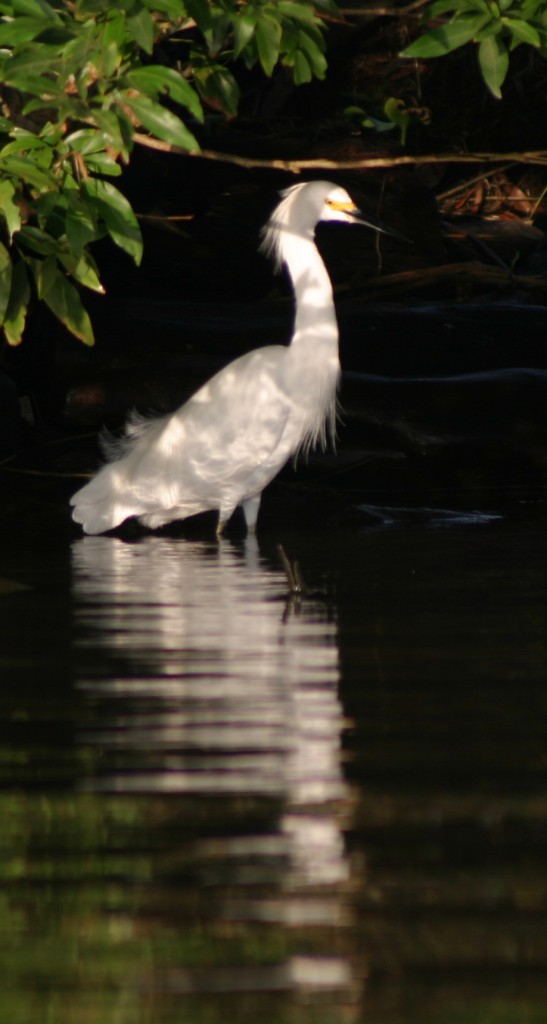Black River Turtles (Rhinochlemmys funerea) are often seen basking on fallen logs along the banks of rivers during the day. At night the web-footed retiles are known to travel on land to forage for food. This turtle was photographed along the Tortuguero River.
All media is copyright costaricawildlife.net, 2013.
